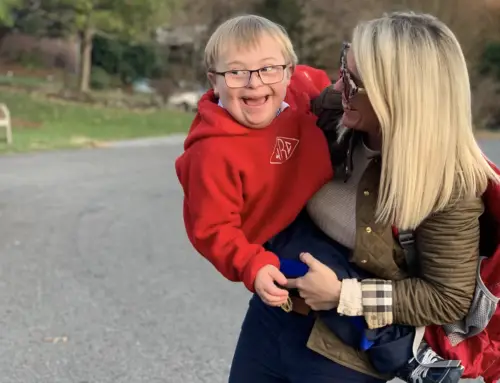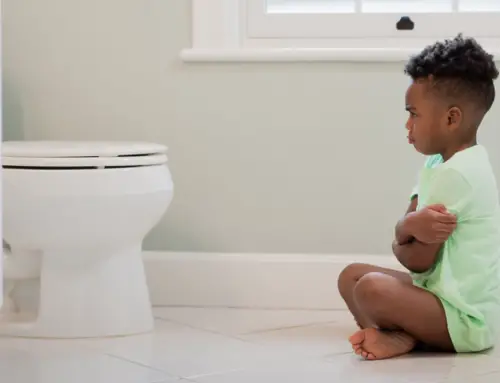Having a child who is non-verbal can be a challenge. As parents, we challenged by the difficulty of determining our child’s wants and needs. At the same time, our child is challenged by growing frustrations in knowing what they want to communicate but find themselves unable to do so. The good news is that your child doesn’t always need to have the ability to say words to communicate. When we are raising a non-verbal or speech delayed child, we find ourselves with the dual tasks of trying to encourage speech development and teaching them to communicate in other ways.
Some children will in time and speech therapy gain the ability to speak verbally. Some of our children with special needs, however, will always face speech barriers and will need other tools to communicate for the rest of their lives.

This post contains affiliate links for your convenience whereby I earn a small commission if you choose to purchase through my link at no additional cost to you. For more information see my marketing page.
Both Grasshopper and Ladybug have experienced speech delays. Grasshopper’s speech delay was pretty minor, just a few months of speech and early intervention and he was meeting milestones. Ladybug, however, was for the most part non-verbal much longer. As a preschooler she could stay one word at a time, often labeling items. Eventually, with a LOT of speech therapy, the one-word utterances turned into two or three-word phrases. A few years later, those eventually grew into short four or five-word sentences. Conversations are still an area we are working on though.
When we are raising a #non-verbal or speech delayed child, we find ourselves with the dual tasks of trying to encourage #speech development and teaching them to communicate in other ways. #specialneedsparenting Click To TweetFrustrations of a Non-Verbal Child
As a parent of a non-verbal child, it can be heartbreaking seeing our child struggle. We know they have things to say and communicate but they just can’t get it out. I’ll admit, this can be incredibly frustrating as a parent. Ladybug used to scream continually. She wasn’t hurt, or sad, she was just frustrated (or overly excited) and couldn’t communicate what her needs were.
As frustrating as it can be for us as a parent, imagine what it must be like for our child. They want something, maybe need something, maybe they’re not feeling well and they have no way to communicate. This must be incredibly difficult for our children. They have something to say, they just cannot get it out. Understandably, these frustrations can often lead to meltdowns, presenting even more challenges.
The following are different ways we can help our child learn how to communicate.
Speech Devices
Speech devices are the first thing that people often think of. I know children whose ability to communicate blossomed through speech devices. I’m not going to recommend a particular one here because each child’s needs and abilities are different. If you think your child would benefit from a device, I suggest setting up an evaluation with a speech therapist who has a few models to test out (often times this might be at a larger children’s hospital). Just know that these devices are expensive and it may take your insurance company a considerable amount of time to approve of your child to receive one. Also, there is a learning curve involved so don’t expect your child’s communication needs to be solved overnight. Unfortunately for us a speech device wasn’t an option because Ladybug doesn’t have the fine motor skills to use one.
Speech Therapy
Speech therapy is an obvious choice for a non-verbal child. I recommend getting as much speech therapy your insurance will allow, and as early as possible. When you’re not in speech therapy, or unable to get speech therapy for your child, talk to them all the time. When you’re doing something, say out loud what you’re doing. It might feel silly or like you’re talking to yourself but your child will be exposed to more words and learn their meaning.

For example, when giving them a bath. Say things like “I’m going to get your pajamas” “I’m filling the bathtub with water” “I’m putting shampoo in your hair” “I’m going to rinse the shampoo out of your hair with water” “Time to use the towel to dry off”….. You get the idea, just be vocal yourself.
Reading is another great way to do this. When reading picture books, point out what’s happening in the pictures. If your child can answer yes or no questions ask them questions about what’s happening in the pictures.
I also suggest toys that allow for language development, especially if your child is saying a couple of words. Ladybug’s favorites were Mr. Potato Head which we used to teach different body parts. Another favorite was a Little People House. This one offers so many language opportunities. Words like: he, she, mom, dad, inside, outside, door, bath, potty, chair, lunchtime, bedtime, kitchen, living room — you get the idea.
Sign language
Another great option is teaching your child sign language. Several moms will even use sign language with their typical children before they’re old enough to speak. This doesn’t have to be the ability to sign any and every word, but basics like “more” and “milk”. We used some basic sign language with Grasshopper when we began his speech therapy. Signing Times is a great and inexpensive resource to teach your child basic signs they would need at this stage in life.
Visual Aids
Visual aids are another great tool that is often underutilized. We have learned that Ladybug does much better behaviorally when she knows the plan for the day and has a visual reminder. Using a visual schedule can be a great help for our kids. They are also easy to make if you have a printer and laminator.
Aside from visual schedules, I also recommend visual aids that will help your child answer the “I want” questions. These visual aids can be either in word or picture form. My favorite ones have the word with a picture. With visual aids, your child can point to the picture of what it is they want/need and drastically reduces frustrations that lead to meltdowns. You can even use these cards to give choices. Display two pictures and ask “do you want to ____ or do you want to _____”.
I also recommend you print out pictures of people and places in your child’s life to use with the visual aids. One of the best things about using visual aids is that the concept is easily customizable and inexpensive.
Verbal or Non-Verbal, Communication is What Really Matters
For some children, their language skills will take off. Others will remain non-verbal. As a parent, it can be difficult to accept the fact that our child may never speak with words. If this is the reality you are facing, I want you to remember that your child is still amazing. So amazing in fact that they are learning to communicate without words. They are smart and overcoming obstacles far greater than most children their age. As their parent, we are to give them the tools that they need to communicate. Verbal or not, the ability to communicate is really what matters. When those communication barriers start to come down, you won’t be able to stop yourself from smiling.








Leave A Comment